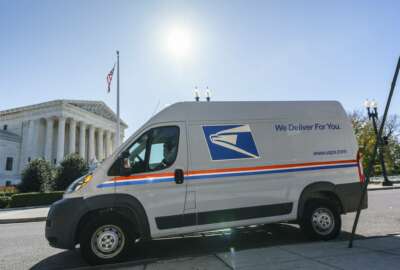USPS reform bill now avoids higher health premiums for other federal employees
The Postal Service’s best shot at a long-term legislative reform in recent years is finally moving ahead in Congress next week.
The Postal Service’s best shot at a long-term legislative reform in recent years is finally moving ahead in Congress next week.
The House expects to vote on the Postal Service Reform Act next week. The House Oversight and Reform Committee approved the legislation last May.
The bill, if passed, would be the first major piece of postal reform legislation to make it through Congress in more than 15 years, and would address issues that stem from the last reform effort in 2006.
The legislation, like many other similar bills introduced in recent years, would primarily eliminate the USPS requirement to pre-fund retiree health benefits well into the future.
The bill has bipartisan support in the House, and has 10 Democratic and 10 Republican co-sponsors in the Senate. It also has the backing of USPS management and its unions.
Notably, the most recent version of the bill now has the support of the National Active and Retired Federal Employees (NARFE), which raised significant concerns about an earlier version.
NARFE, in a letter of support Friday, said an earlier version of the bill contained “onerous provisions” that could have increased health insurance premiums for all nonpostal federal employees and retires.
The earlier version of the bill, the association added, would have also required current postal retirees to pay additional premiums for mostly duplicative health insurance coverage through Medicare.
NARFE President Ken Thomas said that the current version of the bill, however, protects current postal retirees and other federal employees from higher premiums.
“This legislation does what previous bills could not: protect the interests of postal retirees and non-postal federal employees and retirees while also providing substantial financial relief to the Postal Service,” Thomas said.
The legislation would require future postal retirees to enroll in Medicare, a provision that would save USPS about $22.6 billion over the next decade.
The committee, in a fact sheet, said about a quarter of postal retirees don’t enroll in Medicare even though they are eligible, which results in USPS paying higher premiums than other public or private-sector employers.
The bill would also eliminate the agency’s mandate since 2006 to prefund retiree health benefits well into the future. USPS has defaulted on billions of scheduled payments to the retiree health fund since 2012 , but still includes those payments in its annual financials.
USPS expects this provision would save the agency roughly $27 billion over 10 years.
The Congressional Budget Office, meanwhile, estimates the legislation would save the federal government $1.5 billion over the next decade.
House Oversight and Reform Committee Chairwoman Carolyn Maloney (D-N.Y.), who introduced the bill, said that without action from Congress, the “Postal Service’s future is in grave danger.”
“The Postal Service Reform Act will save the Postal Service from financial ruin and will preserve and strengthen this vital institution for generations to come,” Maloney said.
Previous bills stalled in Congress in part because lawmakers resisted moving ahead with legislation until it received a plan from USPS on how it expected to address its long-term financial challenges.
Ranking Member James Comer (R-Ky.) however, said the Postal Service Reform Act, combined with the 10-year plan implemented by Postmaster General Louis DeJoy and the USPS Board of Governors, would deliver “much-needed reforms” and would place the Postal Service “on the path towards financial sustainability as an independent organization.”
Other members of the committee, including Government Operations Subcommittee Chairman Gerry Connolly (D-Va.), National Subcommittee Chairman Stephen Lynch (D-Mass.) and Reps. Virginia Foxx (R-N.C.) and Brenda Lawrence (D-Mich.) contributed substantially to the legislation.
Copyright © 2024 Federal News Network. All rights reserved. This website is not intended for users located within the European Economic Area.
Jory Heckman is a reporter at Federal News Network covering U.S. Postal Service, IRS, big data and technology issues.
Follow @jheckmanWFED






